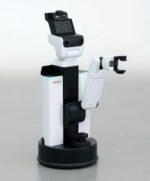AI is here to stay. Now we need to ensure everyone benefits
Artificial intelligence (AI) is already in use in many sectors. Its contribution is expected to rise steadily, driven by advances in data storage, computer processing power and connectivity. Following the report on AI by the Australian Council of Learned Academies (ACOLA), the Royal Society of New Zealand Te Apārangi has launches a report that focuses on the opportunities and risks the “fourth industrial revolution” might bring to Aotearoa New Zealand. AI, in all its applications, is predicted to contribute some US$15.7 trillion to the global economy by 2030. This represents roughly the combined GDP of China and India in 2018. Australia and New Zealand are yet to develop national AI strategies. The reports look 20 years ahead, which is a useful period for policy development. The explicit focus on well-being provides a helpful frame to start national conversations about how to embrace these new technologies, leading rather than passively accepting advances from offshore. AI in New Zealand New Zealand has started to adopt AI in the government sector, with most government agencies employing some form of it. There are advantages in New Zealand’s small size and strong legal frameworks to develop protocols for data ethics and security, and intellectual property, and to nurture a diverse AI-savvy workforce. Placing equity at the centre of the conversation means that we can choose to adopt AI technologies across education, government and industry in the context of public good. This would mitigate the risk of importing biases from offshore algorithms and allow us to identify areas where AI can benefit all New Zealanders, rather than a small international elite. Within the reports’ 20-year horizon, specialist machine learning and narrow AI (a specific type of AI that outperforms humans in a very narrowly defined task) will help us to start removing the “four Ds” – dirty, dull, difficult, dangerous – from our daily work. Instead, we […]










